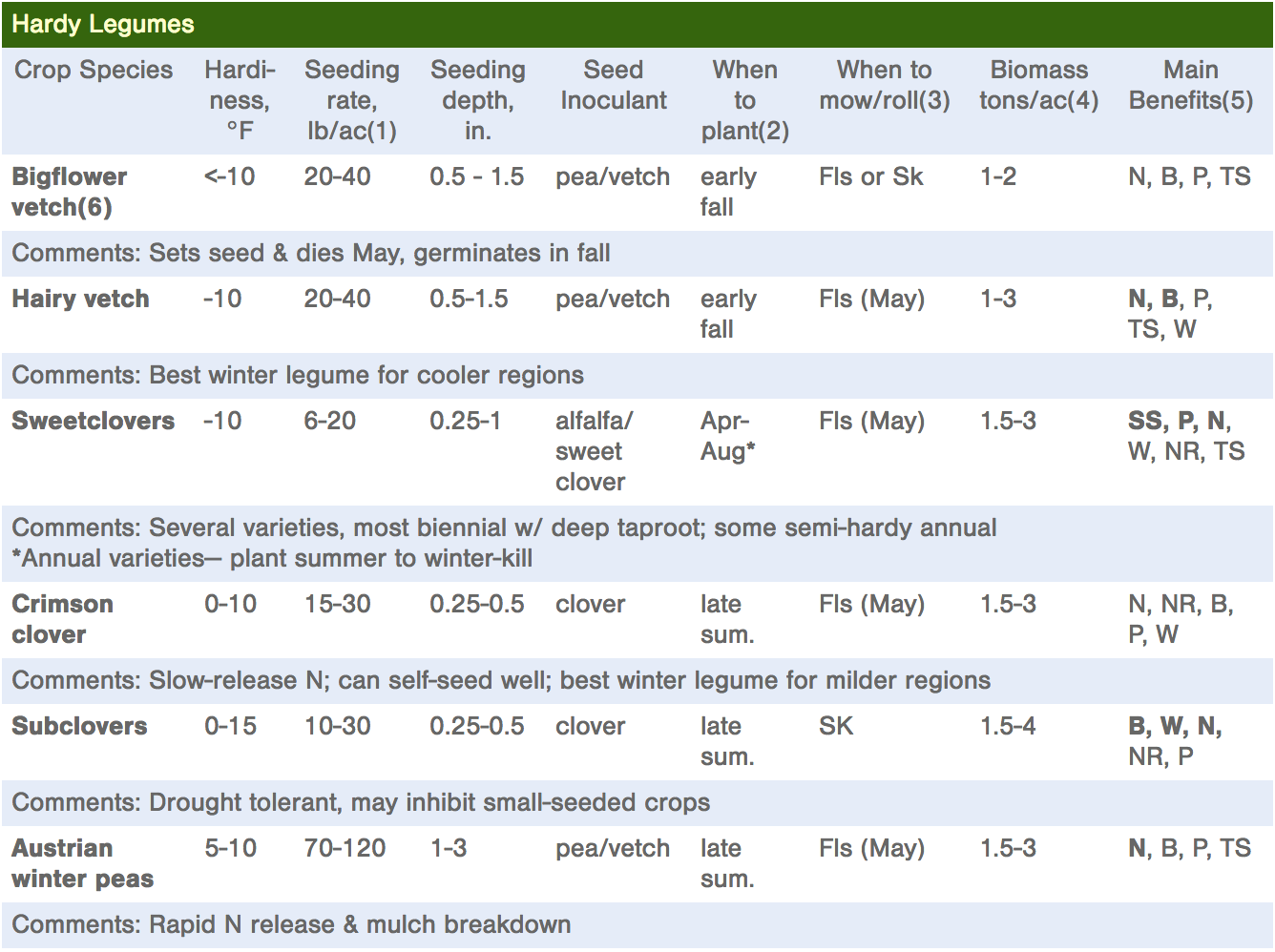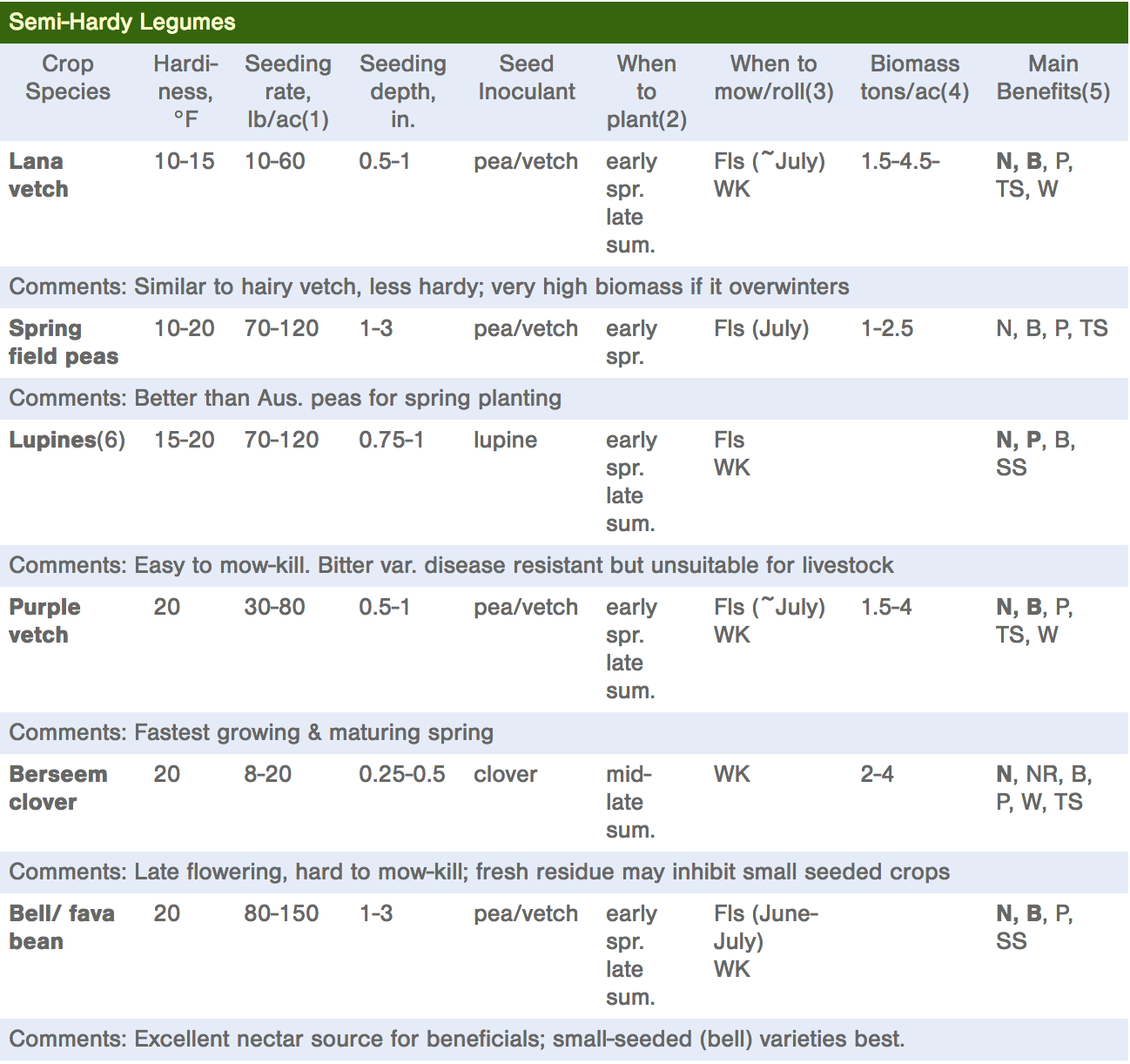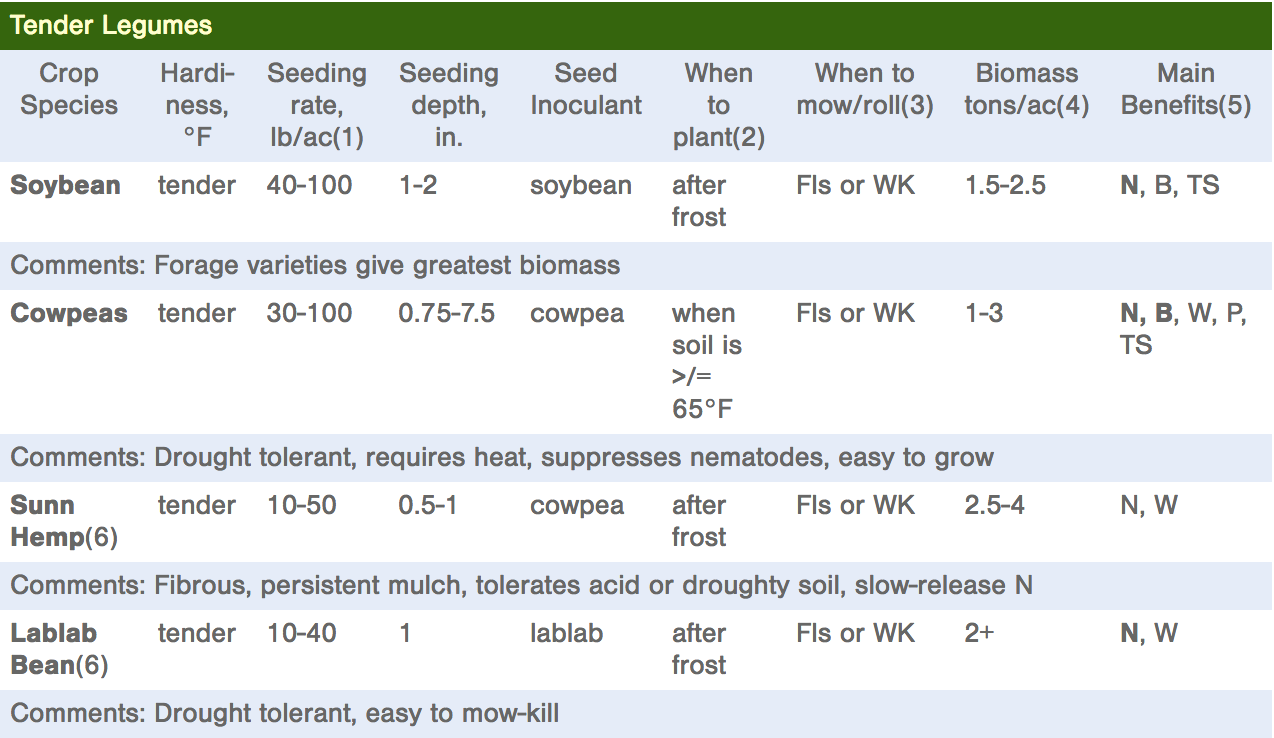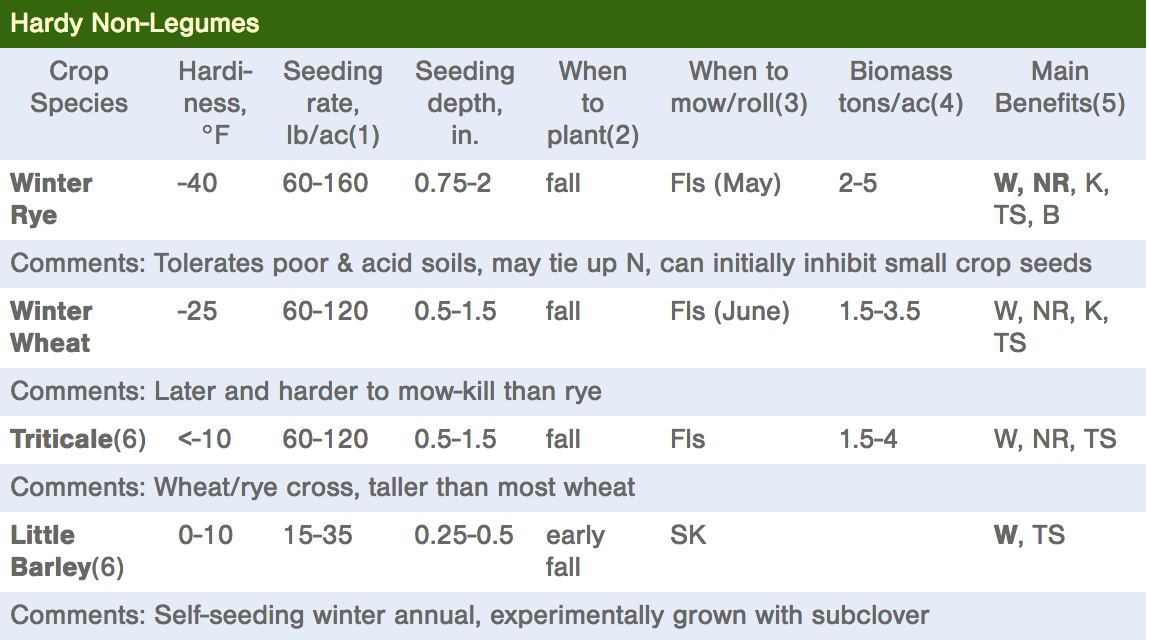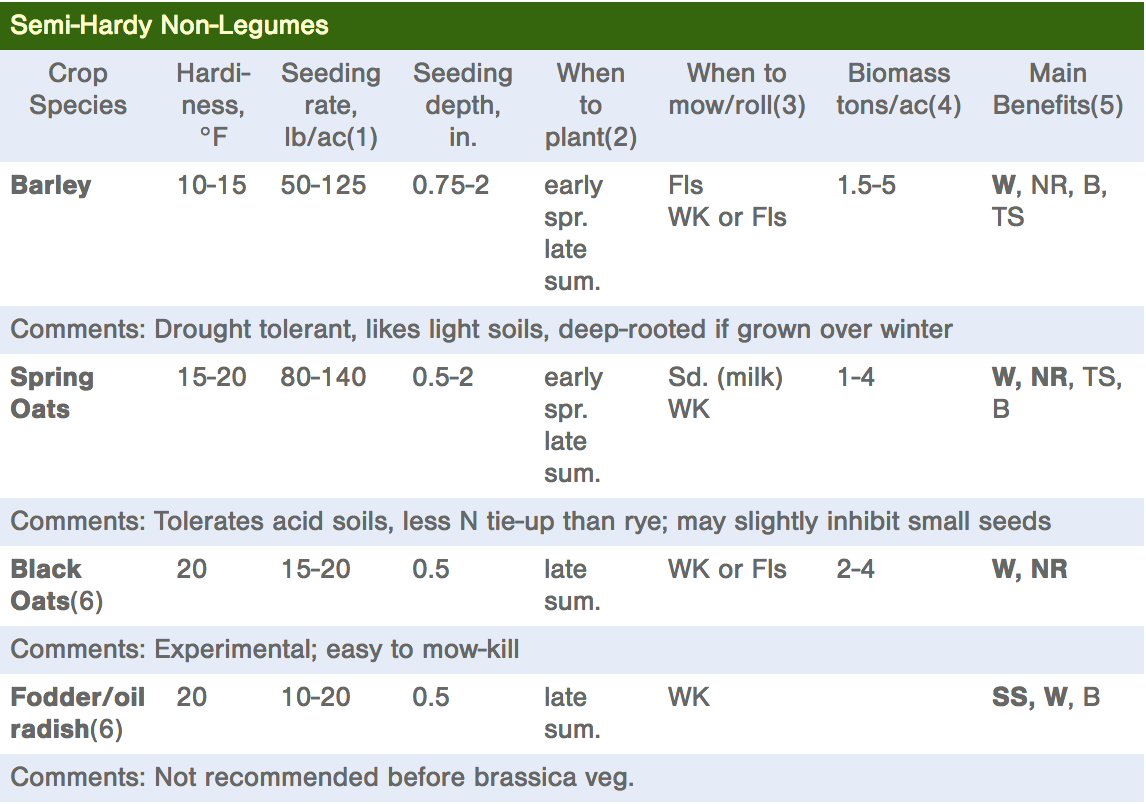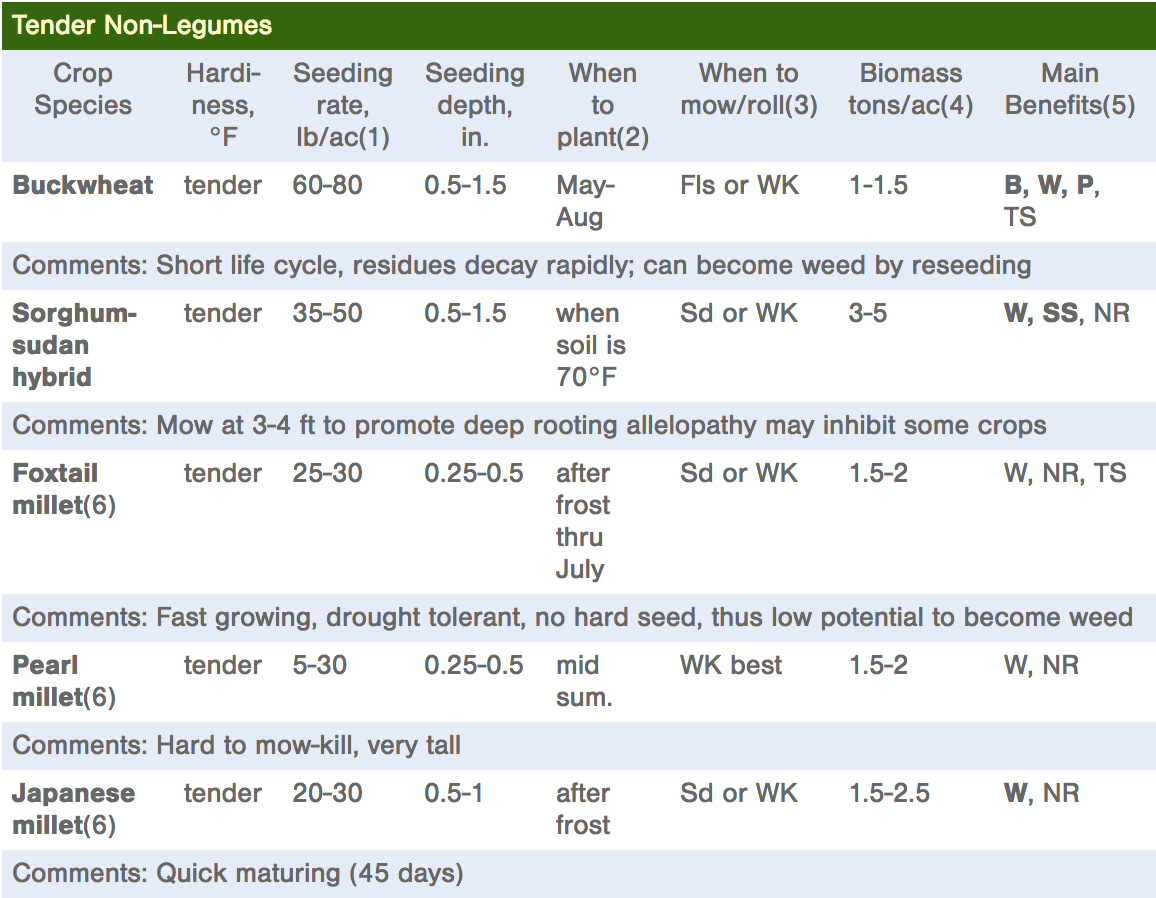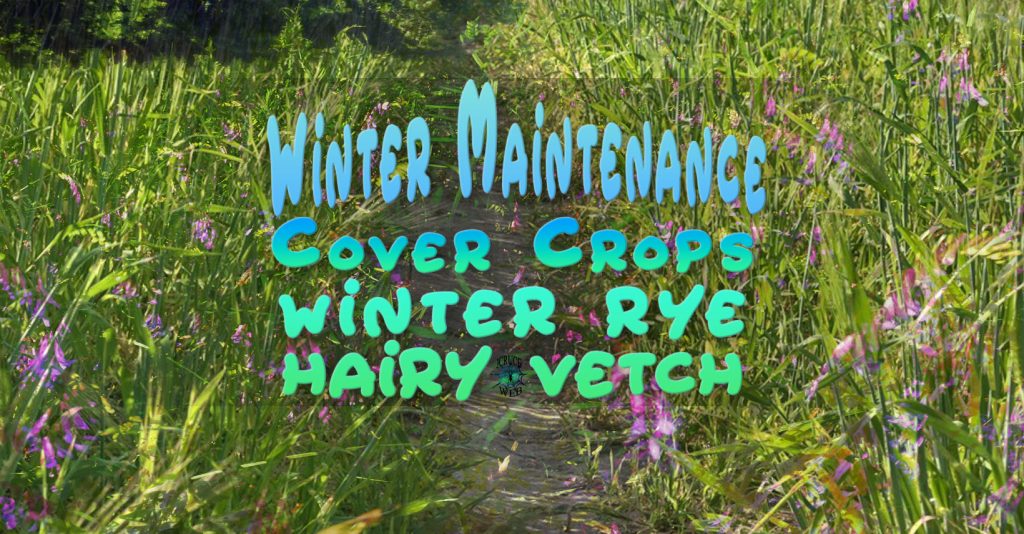
The most widely-known and extensively researched organic no-till systems are those based on hardy winter annual cover crops, mostly combinations of cereal grain rye (or winter rye) and hairy vetch.
Cover crops have been in the political spotlight of late (President Joe Biden vowing in his campaign that the government would pay farmers to plant carbon-sequestering cover crops), but growing them can be novel territory for some farmers. Planted before and after primary crops, cover crops can benefit hemp cultivation in several ways, from preventing erosion and increasing soil aeration to suppressing weeds and providing essential nutrients. However, some growers are not yet planting them, in part because they are uncertain which cover crops to choose.
Researchers have recognized the need to develop proven guidance on cover crops and are studying hemp with different cover crop rotations. Growers are also conducting their own on-farm research on which cover crops work best with their hemp—in rotation or as a living cover.
Research continues on the best cover crops for hemp, but two options are popular among agricultural producers—ryegrass and hairy vetch.
Rye Grass (Secale cereale)
This cover crop is planted in the fall after harvest and will continue to grow the following year. Ryegrass is a popular cover crop option because it is inexpensive and has some great benefits for the soil. It can help prevent erosion and increase overall soil structure. It can also suppress weeds and increase organic matter in the soil.
A hemp grower will want to plant a rye cover in the early fall for an ideal establishment, but the time frame will differ depending on the region. Ryegrass would be a good option for hemp growers harvesting later in the fall because it can handle colder weather. This crop will continue to grow in the spring, so the timing on killing the crop is important.
There are a few ways to terminate rye.
Tilling the crop under is one method of termination, but it must be done when plants reach, at most, about 18-20 inches in height. Rye can have allelopathic properties, meaning it can release chemicals into the soil to suppress the growth of other plants. Because it has this ability, growers should not plant their hemp immediately after killing the rye. When growing corn, it is recommended that the corn is planted a minimum of 10 days after the rye is killed, but we do not yet have an ideal timeline for when to plant hemp after a rye cover crop. Hemp seeds are small and do not have strong seedling vigor, so the time between terminating rye and planting hemp may be longer than corn.

Mowing is another option for termination; growers may then bale or remove the grass from the field.
Using a roller crimper is another method. This option, which is more technical and more common in the organic growing community, crushes the plant’s stem and kills it if timed during late flower.
Herbicides are another way to kill a rye crop, but growers should make sure there are not any concerns that the herbicide will carry over to the hemp crop. Certain herbicide residues could prevent or delay germination and cause damage to growing hemp plants. While we do not have much research on herbicide carryover in hemp, we can use the herbicide label to guide us. Hemp falls into the “other crops” category on a herbicide label, which can be referenced for the rotation restrictions. Other factors contribute to how long an herbicide can persist, including rainfall and soil type. A grower should understand the label and the environmental factors that could contribute to how long residues may last in the field. Farmers should also check their state’s pesticide office to determine if they can apply herbicides before planting their hemp in the spring. Some states don’t allow pesticide applications in a field where a grower intends to plant hemp. Each state has its own pesticide rules, guidelines, and pesticide label interpretations, so make sure to check.
Hairy Vetch (Vicia villosa)
Hairy vetch is another cover crop planted in the fall. Early fall planting will result in a better establishment. This cover crop has many benefits, one of the largest being the supply of nitrogen this legume provides.
Legumes, including vetch, have the ability to fix nitrogen and make it available to subsequent crops. Vetch can also suppress weeds and help with erosion control, but a thick stand must be achieved to reap these benefits. Vetch, if allowed to flower, will be visited by honeybees and other pollinators.
This crop can be tilled under using a variety of tillage types. Strip tillage, or keeping the vetch between rows as a mulch, can provide additional advantages, like providing a habitat for beneficial insects. However, there are diseases that can infect both vetch and hemp, including downy mildew and gray mold. This could be especially problematic for hemp growers that have a vetch living cover between their rows of hemp. Other termination methods include roller crimping and herbicide application.
Purdue University and Rodale Institute are currently researching both ryegrass and hairy vetch as a cover crop planted before hemp. The research is funded in part by a USDA Organic Agriculture Research and Extension Initiative Grant.
Once growers weigh these considerations, they should spend some time digging into the details of how to successfully incorporate cover crops. It’s also important to note cover crops are just one facet of a crop management plan; growers still need to assess and control weeds, diseases, and insect pests.
Cover Crops for Organic No-Till Mulch Systems
In no-till cover crop systems, the known benefits of cover crops are maximized by allowing them to grow until shortly before planting the vegetable or other cash crop, and by managing the cover crop without tillage. The best cover crops for this purpose have the following characteristics:
- They produce a lot of biomass, at least 3 tons above-ground dry matter per acre.
- They are readily killed by mowing, rolling, or other mechanical means, forming a mulch or
- they are reliably winter-killed, leaving a mulch for spring no-till planting, or
- they die down naturally in time to plant summer vegetables.
- Their residues are sufficient to provide effective weed control in the subsequent vegetable crop.
- They provide habitat for natural enemies of vegetable crop pests.
- They have a favorable (or at least neutral) effect on levels of available soil N, P, and K.
- They do not suppress the vegetable through chemical (allelopathic) or microbial effects.
- They do not present serious weed, pest, disease, or other management problems.
Often, a combination of a grass and a legume is used, since this enhances biomass production and therefore mulch thickness, weed suppression and organic matter inputs. The combination also offers a balanced carbon to nitrogen (C:N) ratio, which gives a gradual release of plant available N, in contrast to the N-immobilization (tie-up) by an all-grass cover, or the rapid N release and potential leaching losses from an all-legume cover. The higher diversity of a two-species cover crop can also enhance allelopathy (suppression of weeds by natural chemical substances from the mulch), diversity of beneficial soil microbes, and nutrient effects. For instance, legumes tend to enhance availability of phosphorus (P), while grasses, especially rye, enhance availability of potassium (K).
The most widely-known and extensively researched organic no-till systems are those based on hardy winter annual cover crops, mostly combinations of cereal grain rye (or winter rye), hairy vetch, crimson clover and Austrian winter peas. These crops are planted in early fall, and mowed or rolled after they flower the following spring, usually in May. Summer vegetables like squash, cucumber, pepper, tomato, eggplant, okra, sweet corn, beans, or (in cooler regions) mid-season brassicas, are then transplanted or direct-seeded no-till into the cover crop mulch.
In recent years, growers and researchers have begun experimenting with a much wider range of annual cover crop species for no-till vegetables planted at other seasons. Other cool-season annuals like oats and fava beans can be planted in early spring, then killed in mid summer for late plantings of cucumber, bean or summer squash. Summer annual (frost-tender) cover crops like millets, cowpeas or soybeans can be planted after the spring frost date, then knocked down at the end of summer to plant fall brassicas or other fall crops. Finally, cover crops that are not winter-hardy in a given location can be planted in mid to late summer and allowed to winterkill, forming a mulch for no-till spring vegetables.
One of the basic tenets of sustainable agriculture is that greater diversity yields greater agro-ecosystem stability, more beneficial organisms, fewer pests and diseases, more sustained crop yields, and more opportunities for farmer innovation. We feel that this is true also of cover crops, and one of the objectives of ongoing research is to develop a larger cover crop “toolbox” from which growers can select cover crops most suited to their regions and production systems. The following table gives some basic information on a number of cover crops, some tried-and-true, and some less-known experimental species. The table is organized into legumes and non-legumes, listed in order of cold-hardiness. The table is intended not as a cover crop prescription for organic no-till vegetables, but as an information resource for farmers and other experimenters to use in selecting cover crop combinations for their specific vegetable crop rotations and cropping systems.
Getting CBD and fiber-type hemp to shoot from the soil successfully is possible while using cover crops and no-till.
- Cover Crops – Winter cover crops are an option for almost every hemp farmer in the U.S. They should be utilized and will reward you greatly if you plan ahead. Some are sown in the fall, and some are sown in the spring. Many can even be seeded through the dead of winter and they will sprout with the spring rains. Cover crops will both improve your soil and help with weeds and yields next season.
- Check your soil – Late fall, winter, and early spring all present great opportunities to test your soil. Soil testing is usually outlined by your local co-op or state agriculture department. You can see how well your fertility program worked, and how much your soil changed throughout the season. This also allows you to know if you will spread things like lime or rock phosphate which need to be out a few months before the growing season.
- Prepare your soil/apply nutrients – As mentioned previously, some nutrients require a few months of being worked into the soil before they can be used by your cannabis plants. Many rock fertilizers and lime can be applied many months ahead with great success. Those who have tillage programs can sometimes find a nice warm day in the winter to till the soil and work in any nutrients or compost that you may add. You can even use this time to create terraced rows or dig irrigation lines. I personally also love to use this time to clean up trash, old stakes, or possible hazards in the field.
- Make sure harvested Hemp or seeds are properly stored– Many farmers still will have harvested products or even seeds that are going to be stored through the winter. It sounds very easy to just store things in a cool, dark place until you need them however routine quality checks should be done! Proper storage of hemp and hemp seeds is crucial for making them last. Storing is only half the part of the work though, and the other part is checking on those regularly as you make it through the winter.
- Clean and maintain your facilities/equipment – If you are a hemp farmer of any scale, you are going to have some tools or machines/equipment that needs maintenance. Whether it is changing the oil on your mower, cleaning the floors in your sprouting room, sanitizing pots, replacing tractor parts, or sharpening the blades on your trimmers there is always maintenance for a hemp farmer. Your fields or facility may even have fences or gates in need of repair.
- Get ahead on accounting and taxes – This one speaks for itself. It is very easy to procrastinate doing your yearly taxes or taking care of your accounting needs, however, winter is a great time to plan on getting ahead.
- Utilize social media/networking – Make use of the downtime to advertise your business or farm online.. even if it is just to connect with other farmers and share information. There are many great educational events or online courses available to those who seek them. The hemp industry is becoming more of a competitive one each day and those with an online presence will prove to be the most successful!
- Outline your crop plan for next season – Anticipate the fact that it is easy for time to get away from you in the winter months, and the growing season can hit fast and force you to plan things quickly. Begin to write down ideas and formulate a plan for your next growing season if you haven’t already. The nature of farming is to be unpredictable, but you can use your knowledge and online resources to have a rough plan in place through the winter to revise as you need.
